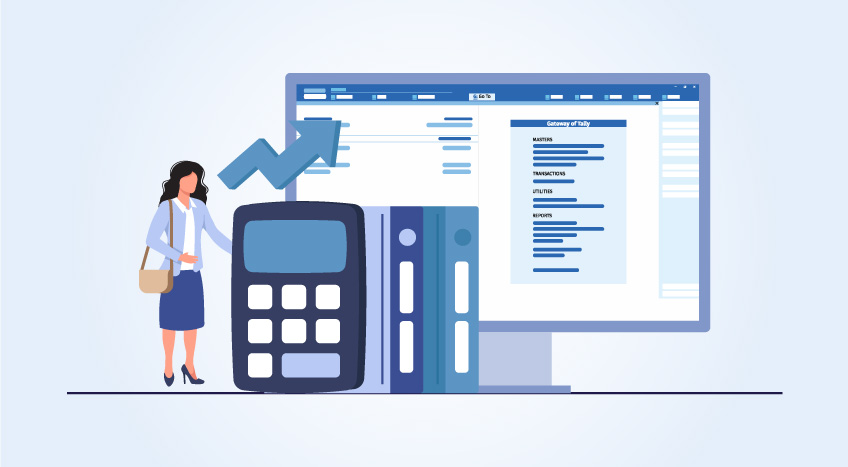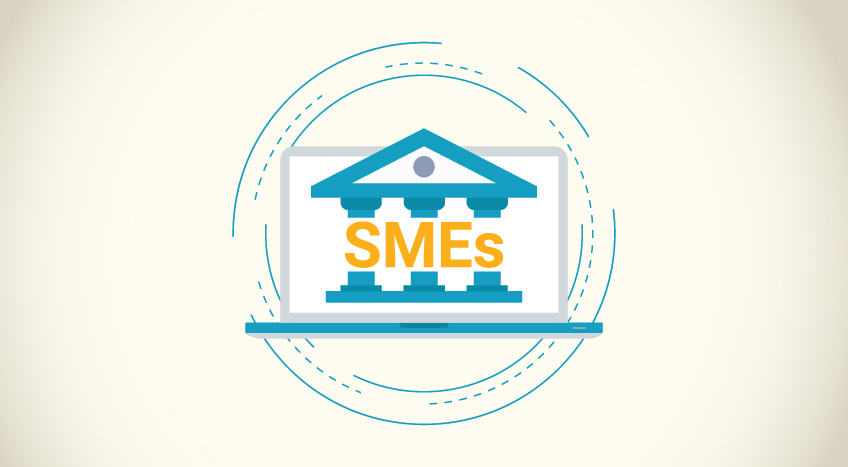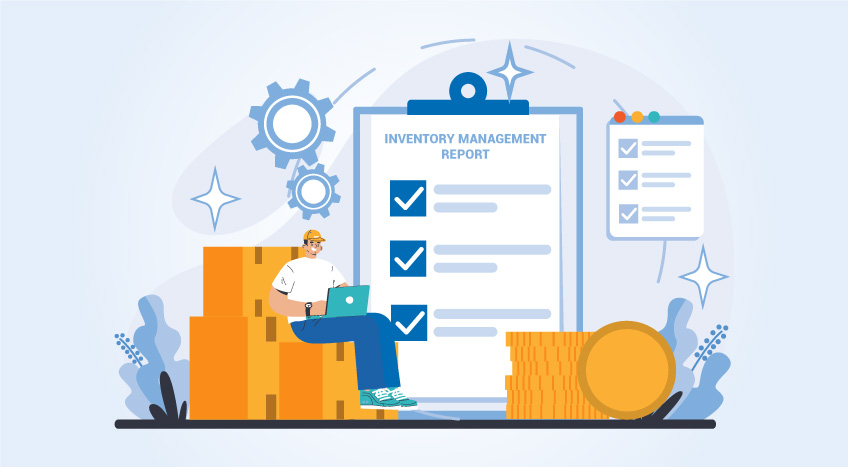- What is accounts payable?
- The accounts payable workflow process
- Documents associated with the AP process
- Challenges to the AP process
- Streamlining the account payable cycle
- What is accounts payable process automation?
- TallyPrime for accounts payable process automation
What is accounts payable?
Accounts payable is managing the bills that a company has to pay. In a small business, the owner usually deals with the accounts payable. In larger corporations, the volume of accounts payable is high.
Accounts payable and accounts receivable are important because they determine the company's cash flow. And a healthy cash flow is important for the success of a business. This is why accounts payable should get more attention than it usually does. A software for Accounting that helps keep track of and manage accounts payable is essential.
The problem with accounts payable in the traditional form is that it relies on paper bills and documents. These documents are difficult to search and track and are not uniform. Additionally, it takes time when a file has to move from desk to desk for payment approval. This slows down the accounts payable process and can make it inefficient. It is also more difficult to control access to paper files. When accounts payable processes are digitized, data flows across the company instantly, and approvals are quick. However, the security of the accounts payable data is strong.
Accounts payable managed manually is prone to human error. There may be a double payment issued by mistake. Or a bill could be marked as paid when it has not been paid or vice versa. However, business management software automatically updates all the other relevant ledgers, such as the cash book or the bank account. This ensures that the company maintains a good reputation and good supplier relationships.
Invoices may have different payment dates that are more challenging to manage manually. Paying a bill late impacts supplier relationships. Accounts payable software makes it easier to pay all your bills on time to ensure adequate cash flow without bill defaults. Physical files that take time to approve may cause delays in paying bills. Accounts payable software enables quick approvals and timely processing of payments.
The accounts payable workflow process
Each company may have its accounts payable process. But, the general process flow is as follows:
- Receipt of bill or invoice from the supplier: When the supplier sends a consignment, it is accompanied by a bill or an invoice
- Verification and three-way matching: The supplier's bill should be verified with the purchase order and the receiving report based on the supplied items. This ensures that the order has been supplied per the purchase order and matches the items delivered. This step is essential to prevent fraudulent invoices with no purchase order. It also ensures that the goods or services that are being paid for have been received
- Update the records: The details of the supplier invoice are recorded in the accounts payable system and cross-referenced to the originating purchase order
- Approval: In companies where approval is required for payments, the person in charge of approvals would view the invoice and approve or reject it
- Payment: The payment is made for the specified amount and as per the agreed terms and conditions. The appropriate ledgers are updated with the information and the payment process is closed
There may be fewer or additional steps in the accounts payable process depending on the company’s practices. But, the sequential process with verifications is essential to prevent fraud or malpractice.
Documents associated with the AP process
The most commonly used documents in the accounts payable process are:
Purchase order or PO: This is an important document that confirms the order from the company to the supplier. It is legally binding and confirms the order's details, including the items, description, quality, quantity, and other terms and conditions. The department creating the purchase requisition, purchase department, accounts payable department, inventory or receiving department, and the supplier are all involved in the purchase order.
Receiving report: This document confirms the receipt of the supplied items. It should match the items and details specified in the purchase order. A mismatch will lead to further investigation and verification if there is a mismatch.
Supplier/vendor invoice: The supply of an order is usually accompanied by an invoice from the supplier. This document is important to the accounts payable department as it directly deals with the amount of money due for the order supplied. The accounts payable department's major responsibility is to ensure that there is a three-way match between the purchase order, receiving report, and the supplier’s invoice before processing the payment approval.
Receipt Vouchers: A voucher may be raised by the accounts payable department to complete the payment approval.
Challenges to the AP process
Some of the common challenges to accounts payable processing are:
Time delays: It is good to process accounts payable approvals as quickly as possible. This ensures timely payments and good supplier relationships. Moving paper documents from person to person for approvals will take time. If there is a delay in this movement of files, it can delay the rest of the process. This results in delayed payments, penalties, and damaged supplier relationships.
Verification errors: The three-way match of the purchase order, receiving report, and supplier invoice is central to the accounts payable approval process. It ensures that the order has been delivered in response to and per a purchase order. It prevents payment of a supply invoice that has no matching purchase order. The three-way verification also checks if the delivered items match the purchase order specifications and matching invoice. This prevents fraudulent invoices submitted without a purchase order or delivery of items. Clerical errors in generating the purchase order, receiving report, or supplier’s invoice can cause matching errors. This will stall the payment approval.
Exception management: Something as simple as a mistyped invoice can cause delays in payments and impact other supplies from that supplier. The accounts payable department and process must be able to quickly and efficiently navigate such exceptions.
Fraudulent purchases: If there is no three-way verification, the company may inadvertently pay a person who has not supplied goods or a supply that was not ordered in the first place.
Fraud: Accounts payable is the company’s defense against attempts at fraud through the supplier invoice route.
Misplaced documents: Paper documents can get easily misplaced or lost. This can delay the accounts payable system and cause problems with suppliers.
Double payment: Inefficient manual systems can sometimes result in multiple payments of the same invoice. This can also happen when the company uses standalone accounts payable software modules without centralized integration.
Lack of visibility: It is very difficult to track and study paper documents. This makes it difficult to manage and analyze the accounts payable system through which cash flows out of the company. Good analysis and control of the accounts payable process are essential for the company to optimally manage its cash outflow.
Streamlining the account payable cycle
Accounts payable can be made more efficient and streamlined by centralizing the documents through automation. This results in the following benefits:
- No paper, which means faster processing through the accounting software process flow and fewer human errors
- Links all the documents through the accounts payable process for better management and tracking
- Prevents fraud
- Helps manage the vendor relationship better
- Easier three-way matching
- Links the accounts payable system with ERP and CRM for better and easier management
- Helps manage and control spending through the accounts payable process
- Prevents delayed payments
- Allows the company to have multiple checkpoints in the accounting software process flow and detect discrepancies and other issues
- Better visualization and analysis of the company’s spending
- Easier report generation for financial reporting and tax filing
What is accounts payable process automation?
Accounts payable process automation digitizes most of the processes in the accounts payable system. It eliminates the slow movement of paper, delays, and errors in the accounts payable system. It helps the company achieve greater efficiency and speed in the payment process. Some of how it achieves this are:
Quicker approvals: The automation of the documentation eliminates errors that would otherwise delay the approval of accounts payable vouchers
Timely payments: Quicker approvals and inbuilt reminders helps the company make payments on time
Visibility: Automation improves the visibility of accounts payable trends and information
Better cash management: More visibility results in better control of the cash outflows from the company. This helps in better management of the company’s working capital.
TallyPrime for accounts payable process automation
TallyPrime, a business management software from the house of Tally, offer an intelligent and complete way to automate your accounts payable system. It offers the following advantages:
Integration: TallyPrime integrates business management functions into one comprehensive software solution. By integrating and interlinking all the relevant modules, accounts payable data automatically like with and updates inventory and financial accounting. Synchronizing these functions is essential for the software to be truly useful and add value to the business management system.
Bill-by-bill tracking - Each invoice is recorded, tracked and linked with the payments. This is achieved by generating a unique reference number for each invoice which is used to track the payments. This way, you have a clean track of payables and ones that have been settled.
Centralization: Regardless of how the vendor’s invoice is delivered, TallyPrime stores all the information in one place. It also links all the relevant documents in the accounts payable process.
Easier workflows: The accounts payable process steps and approvals are easy and quick.
Audit trails: Take the challenge out of audits with the audit trail feature. It maintains impeccable audit trails that make the system more secure and an auditor's job easier.
Reports: Multiple reports help manage the accounts payable process completely. It also helps spot trends and patterns essential to making better decisions.
Read More:










